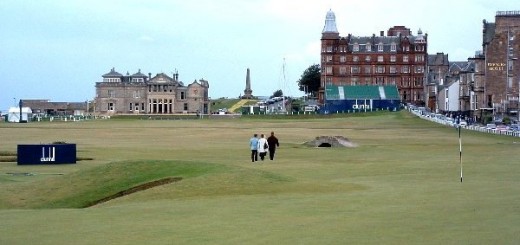Timing Is Everything
It was the best of times. It was the worst of times. It was a time when ANYTHING could happen. It was a time when some things were not allowed to happen. This is a tale of two teams, from two cities, passing through history. A tale of two teams MAKING history.
The time was the decade of the 1960’s. By saying it was a time when ANYTHING could happen, this was a decade where people could look up at the moon orbiting our earth, that had only been looked at but had never been reached, and through the collaborative efforts of dreamers, scientists and technology, they could actually send a rocket out into space and land the first person on that same moon before the decade was over. A new mindset was being formed where a person metaphorically COULD reach for the stars and achieve great things that could never previously have even been imagined.
It was also the worst of times, though, as some things were NOT allowed to happen. That includes the idea that people of color (mostly the color black, but today the term most often used is African-Americans) were not treated fairly, were not treated equally, and were not allowed access to the same opportunities as everyone else in the country. If you studied your history books, it was the Civil Rights Era, a time of racial social injustice and grossly unfair living conditions, a situation that Martin Luther King Jr. fought so hard to combat, and devoted his entire life to changing.
One of the two teams was the UCLA Bruins men’s basketball team. This was THEIR era. THEY dominated college basketball like no one has ever done before (although the UCONN women’s teams of today are doing a heck of a job in trying to duplicate the UCLA success). UCLA won national championships under their legendary coach John Wooden in the 1963-64 season and the 1964-65 season. They also won national championships in the 1966-67 season and for the next SIX straight seasons after that. We’ve all heard of a THREE PEAT being good. How about a SEVEN PEAT? We’re talking NINE out of ten!!!!
It is important to note HOW GOOD the UCLA team was in 1966-67. They had the greatest college basketball player in history on their team, Kareem Abdul-Jabbar (although at that time, he was known as Lew Alcindor). How do I have the nerve to say Abdul-Jabbar was the greatest player of all time, when more recent and celebrated player Christian Laettner made the Final Four in all four of his years (1988 – 1992) and won two NCAA championships during those four?
During Kareem Abdul-Jabbar’s three years at UCLA (It is important to note that his first year, his freshman year, athletes then were not allowed to play on the varsity basketball team. More on this later), Abdul-Jabbar’s teams only lost TWO GAMES during his entire career. They were 88 and 2 during his entire stay there. Compare that to Laettner’s Duke team that lost eight games during his first year alone. Kareem’s team WON the national championship in all three of his three years at UCLA. (compared to Laettner’s two out of four). Kareem was also the MVP of the NCAA tournament in all three of his appearances, the only player to ever do that. His was, simply, the greatest career in college basketball history, and it is to Laettner’s credit that his career is even mentioned in the same breath as Kareem Abdul-Jabbar’s career. (The
college career of Bill Russell and his leading of USF to the 1955 and 1956 NCAA championships was not bad either)
But, back to the missing year of the UCLA dynasty, 1965-66 and that OTHER TEAM. That other team was the Texas Western Miners, a college that is now known as the University of Texas at El Paso, or UTEP. That year, they were a really good team that only lost one game during all of the regular season, and were the number three ranked team in the nation. Kentucky was the number one ranked team. Where was UCLA? Most of their stars from the first two championships had graduated and their great freshmen team (including the celebrated high school phenom Lew Alcindor, aka Kareem Abdul-Jabbar now), was not yet eligible. They were good, (second place in their conference), but at that time there was a smaller field, and a rule where second place teams in their conferences did not make the “big dance,” aka tournament field, which I guess would qualify it as “a bit smaller of a dance.”
There was no UCLA in the 1965-66 NCAA Tournament. If ANYBODY was going to do anything in college basketball during that era, that YEAR was the one to do it. Timing, as they say, is everything.
Back to the historical perspective of the times. Kentucky played in the Southeastern Conference, aka “The South.” Those same southern schools that, at that time, were not wanting to allow black Americans to even attend their schools, were then, by choice, not having ANY black players playing on any of their basketball teams either. None. This, remember, was the years 1965 and 1966. UCLA had utilized black players on their successful teams. Indeed, from the Bill Russell led Boston Celtic team’s success throughout the early 60’s, the world was starting to notice that black players were excellent
basketball players that SHOULD be playing at ALL of the nation’s schools. But, again, this was the south in 1966.
And so two schools advanced to the championship game. Kentucky, the number one team in the country, who was all white by choice, was there. And Texas Western, the number three ranked team, would, for the first time in NCAA history, be there in the finals to face them, starting an all black team in the NCAA championship game against this very good, all white team. In the 60’s. On national TV. In the absolute center of the storm that was the Civil Rights movement of that turbulent era.
This, unfortunately, was not a time when college basketball was that big of a deal, compared to the way it is now. There was NOT any wall to wall coverage of all of the games of the tournament. The ratings for NCAA basketball were not that big in those days. College basketball had NOT hit the big time yet. (That would start gaining momentum a year or two later, as the UCLA dynasty progressed, and would really hit it big as the Magic Johnson – Larry Bird game in the finals captured the public’s imagination) This game should have been seen by more people than it did.
But, suffice it to say, the final game, in the context of WHO was playing against WHOM and WHEN it occurred, was a very important moment in the history of our country. Kentucky was supposed to beat Texas Western. Kentucky SHOULD HAVE beat Texas Western. Doesn’t Kentucky ALWAYS beat the Texas Westerns of the world? But, Texas Western defeated Kentucky in a hard fought, competitive championship game 72 to 65. This was a miracle upset in the NCAA tradition of small school Davids vs. major conference powerhouse Goliaths. The result was something that seemed like it could only have been scripted by Hollywood. In fact, if this story seems familiar, it WAS made into a movie called “Glory Road.”
And history was made. “The South” was forced to start integrating their schools by the courts. The southern basketball programs started admitting players of color to their universities and utilizing the talented black players of our nation shortly after that momentous game. One game helped to cause that change in a long, ingrained racist mentality.
And the University of Kentucky, in this year of 2015, will be playing in the Final Four, with its five starting players ALL being players who happen to be black.
History has its way of sorting through the bullshit. Historians sifting through the battles between the forces of nature, that, over time, can then be looked at with perspective and then the conclusions can be drawn as to just what it was that happened. Looking back, Kentucky losing that game HAD to happen for the things that followed to be allowed to happen.
The landscape of college basketball today is what it is now because of ALL of that which has preceded it. And a big part of the college basketball tapestry that has influenced today WAS that game in 1966 between Texas Western and Kentucky.
But, the planets had to be aligned just right, the other factors had to fall into place in just the right way for the future to have developed into what it was destined to be.
If the NCAA had allowed freshmen to be eligible in 1965-66, that OTHER team, the UCLA Bruins, who were 30 and 0 in 1966-67, crushing their opponents by a combined average score of 90 to 64, and allowing their opponents a meager average shooting percentage of 39%, would have likely spanked either Kentucky or Texas Western in that year’s tournament.
But they didn’t, and the strand of historical events from that era allowed the game between Texas Western and Kentucky to have such significant meaning because it was the right game, between the right teams, at the exact right time in history, and the result of it allowed some of the worst of times in American history to later change into some of the best of times.
Timing, you see, is EVERYTHING.




